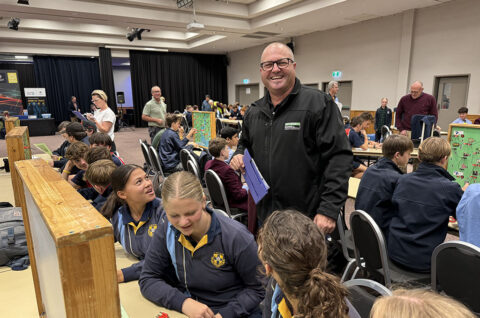Albury to Illabo: Operational Noise and Vibration
When Inland Rail is operational it will generate noise for residents in locations including their own homes, schools and in hospitals. This information explains the key findings from the Albury to Illabo Preferred Infrastructure Report and the steps going forward to minimise impacts wherever possible.
December 14, 2023

What’s changed since the Environmental Impact Statement (EIS)?
A detailed noise prediction model for the proposed design and the surrounding environment was developed to assess airborne noise from railway operations alignment, comprising of:
- the entire 185km distance between Albury to Illabo
- 2km either side of the tracks.
Key noise and vibration findings
Exceedances are driven by a combination of increases in daytime and night-time average rail noise levels (LAeq) due to increased rail volumes and maximum noise levels (LAmax) from existing locomotive operations. The findings below have been separated into a 2025 ‘commencement of operations’ and 2040 ‘designed freight capacity’ scenarios. The findings are intentionally conservative and will be further refined and likely reduced through detailed design.
2025
- 138 residential receivers exceed the daytime average rail noise criteria (LAeq)
- 60 residential receivers exceed the night-time average rail noise criteria (LAeq)
- 27 non-residential receivers exceed the average rail noise criteria (LAeq)
- 1,219 residential receivers exceed the maximum noise level criteria (LAmax).
2040
- 190 residential receivers exceed the daytime average rail noise criteria (LAeq)
- 92 residential receivers exceed the night-time average rail noise criteria (LAeq)
- 27 non-residential receivers exceed the average rail noise criteria (LAeq)
- 1,285 residential receivers exceed the maximum noise level criteria (LAmax)
- Two receivers are within the estimated vibration offset distance.
Next steps
Inland Rail will further refine the reference design into a detailed design, where possible, eliminating noise impacts through smarter railway design. Once the Department of Planning and Environment (DPE) approves the project’s EIS and the reference design is finalised, Inland Rail will complete an Operational Noise and Vibration Review (ONVR).
The ONVR will finalise Inland Rail’s noise mitigation approach by conducting further assessment and identifying which mitigation option is best suited to each receiver. Further consultation on mitigation measures will be undertaken with impacted receivers and this consultation will be documented in the ONVR. The ONVR will be approved by DPE prior to implementation.
Access the Preferred Infrastructure Report (PIR) here.



